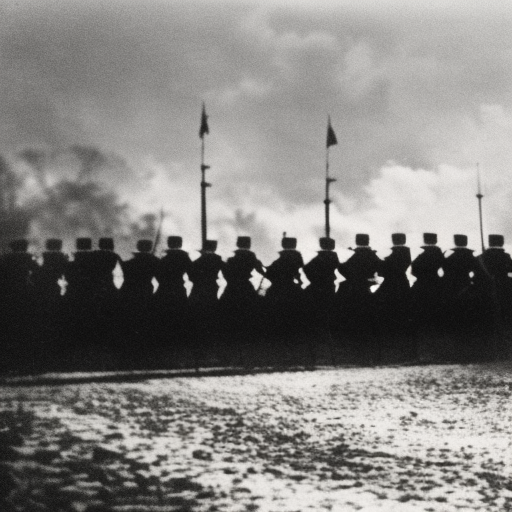Summary:
The Order of Battle of the Waterloo campaign refers to the organization and deployment of the military forces involved in the Battle of Waterloo, which took place on June 18, 1815. The battle was a decisive confrontation between the French army, led by Napoleon Bonaparte, and the combined forces of the Seventh Coalition, commanded by the Duke of Wellington and General Blücher. The Order of Battle provides a detailed account of the troops, their commanders, and their positions during the battle.
French Army:
The French army was divided into four corps, each commanded by a Marshal of France. Marshal Ney led the left wing, consisting of the I Corps under General d’Erlon and the II Corps under General Reille. The center was commanded by Marshal Soult and comprised the III Corps under General Vandamme and the IV Corps under General Gérard. Marshal Grouchy commanded the right wing, which included the Reserve Cavalry Corps under General Kellermann and the VI Corps under General Lobau. Napoleon commanded the Imperial Guard, which was held in reserve.
Coalition Forces:
The coalition forces were composed of the Anglo-Allied army under the Duke of Wellington and the Prussian army under General Blücher. Wellington’s army consisted of the First Corps under General Alten, the Second Corps under General Hill, the Third Corps under General Picton, the Fourth Corps under General Cole, the Fifth Corps under General D’Erlon, and the Sixth Corps under General Maitland. The cavalry was led by General Uxbridge, and the reserve was under the command of General Adam.
Deployment:
On the morning of June 18, the French army deployed in a concave formation, with the left wing anchored on the village of Papelotte and the right wing on the village of Plancenoit. The center was positioned around the farmhouse of La Belle Alliance. The French cavalry was placed in front of the infantry, ready to launch charges against the enemy.
The coalition forces deployed in a line perpendicular to the French position. The Anglo-Allied army held the right flank, with the infantry positioned in front of the villages of Hougoumont and La Haye Sainte. The Prussian army held the left flank, with the infantry positioned in front of the village of Plancenoit.
The Battle:
The battle began with a French attack on the Anglo-Allied position at Hougoumont. The French launched several assaults throughout the day but were unable to capture the farmhouse. Meanwhile, the Prussian army engaged the French right flank, diverting French forces away from the main battle.
As the battle progressed, the French launched a series of attacks on the center of the coalition line. The French cavalry charged repeatedly, but the coalition infantry held their ground. Wellington’s army withstood the French assaults, while the Prussian army continued to press the French right flank.
In the late afternoon, the Prussian army launched a decisive attack on the French right flank, forcing the French to divert troops to defend against the Prussian onslaught. This weakened the French center, allowing Wellington to launch a counterattack with his reserves. The combined forces of the coalition overwhelmed the French, and they began to retreat.
Outcome:
The Battle of Waterloo ended in a decisive victory for the coalition forces. The French army suffered heavy casualties and was forced to retreat. Napoleon abdicated a few days later, and the battle marked the end of his reign and the Napoleonic era.
The Order of Battle of the Waterloo campaign provides valuable insight into the organization and deployment of the military forces involved in this historic battle. It allows historians to analyze the strategic decisions made by the commanders and the effectiveness of their troops. The battle itself had far-reaching consequences, shaping the future of Europe and marking the end of an era.












